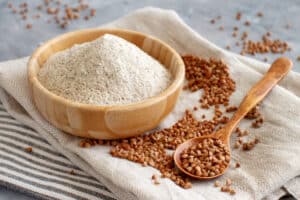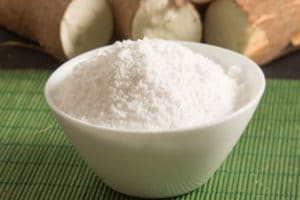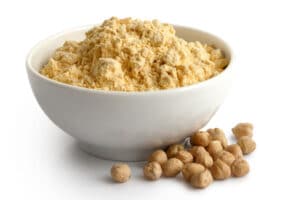Although brown rice flour is a popular alternative for wheat flour, sometimes it’s not what you want for a recipe. There are plenty of suitable replacements for brown rice flour, like oat flour or almond flour. Depending on the recipe you’re using, the appropriate substitute might vary.
We’ve compiled a list of the top five best brown rice flour alternatives to make the search easier.
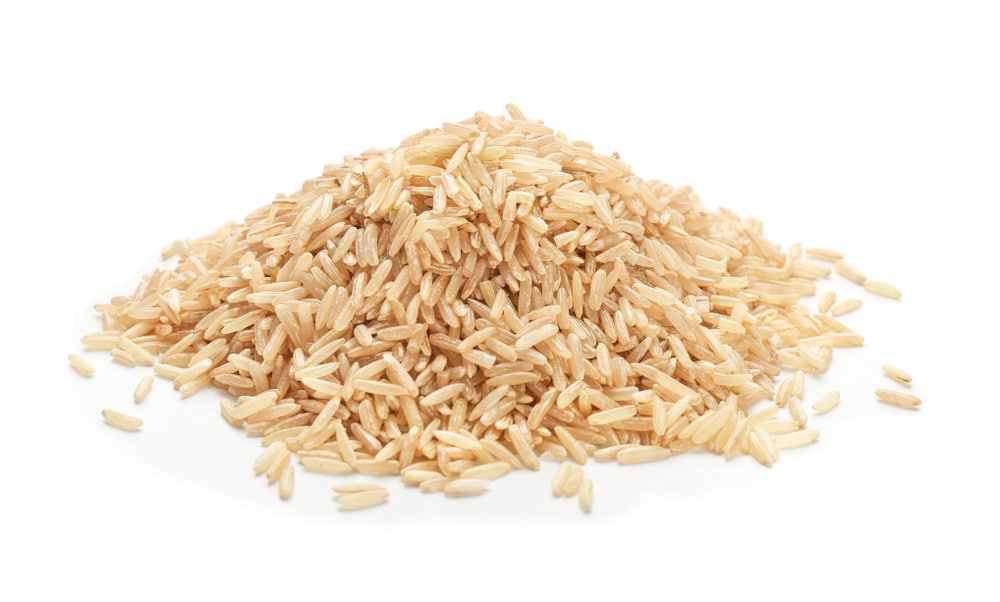
5 Recommended Brown Rice Flour Substitute
Substituting something for brown rice flour will depend on the recipe. Whether baking or cooking, it’s always a good idea to have a few substitutions on hand.
Our 5 recommended substitutions for brown rice flour are:
- Oat flour
- Tapioca flour
- Sorghum Flour
- Almond flour
- Potato starch
Oat Flour: Best Substitute For Brown Rice Flour
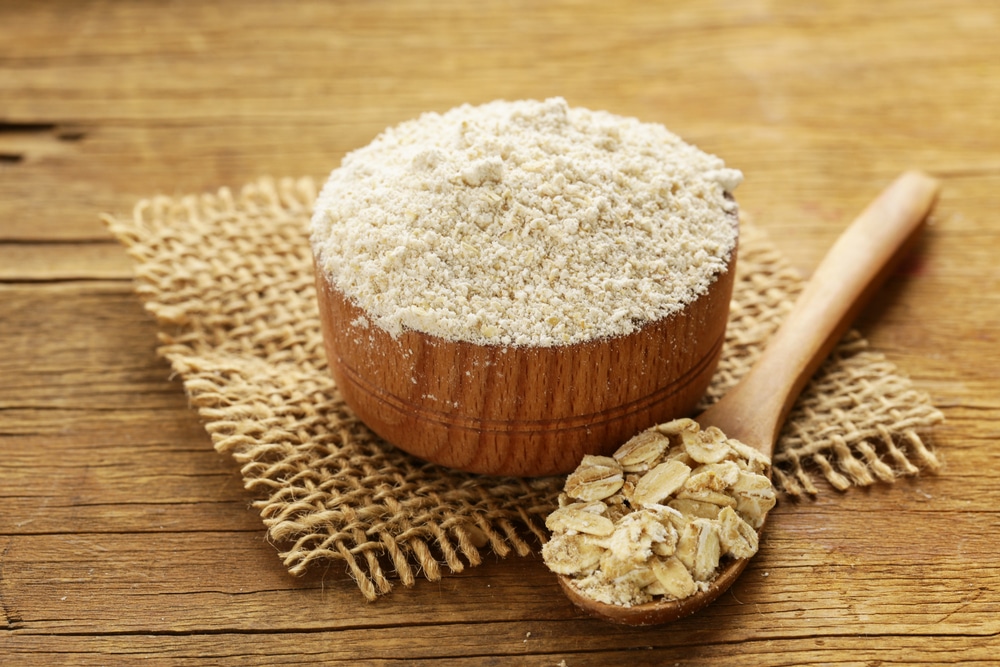
High in fiber and protein, oat flour is gluten-free and a great substitute for brown rice flour in many circumstances.
Oat flour offers all the health benefits of the whole grain. It’s easy to find in grocery stores and even easier to make if you keep oats on hand!
Similar to brown rice flour, oat flour is a sturdy flour option. Whereas brown rice flour is dense, oat flour has a much lighter texture. It has a more pleasant flavor than other substitutions, and it can add a delicate, fluffy quality to baked goods. It can make cookies chewier and sometimes can make them crumble easily.
When you replace brown rice flour with oat flour, use a one-to-one ratio. Oat flour will replace brown rice flour without much fuss. Since both options are simply finely milled whole grains, they contain many nutrients that make a great addition to any kitchen project.
Oat flour is an excellent replacement for brown rice flour in baked goods. It gives muffins a light, crumbly texture and a rustic look. It makes cookies chewy and adds a unique, natural flavor. While other flour substitutes can retain the taste of their base ingredients, oat flour brings a complementary flavor all its own.
If you can’t find oat flour in the store, you can quickly make some yourself. Simply use a good blender or a spice grinder (a coffee grinder works, too!), throw in some whole oats, and grind it up. Get it as fine as you can, and you’ll be good to go.
Tapioca Flour
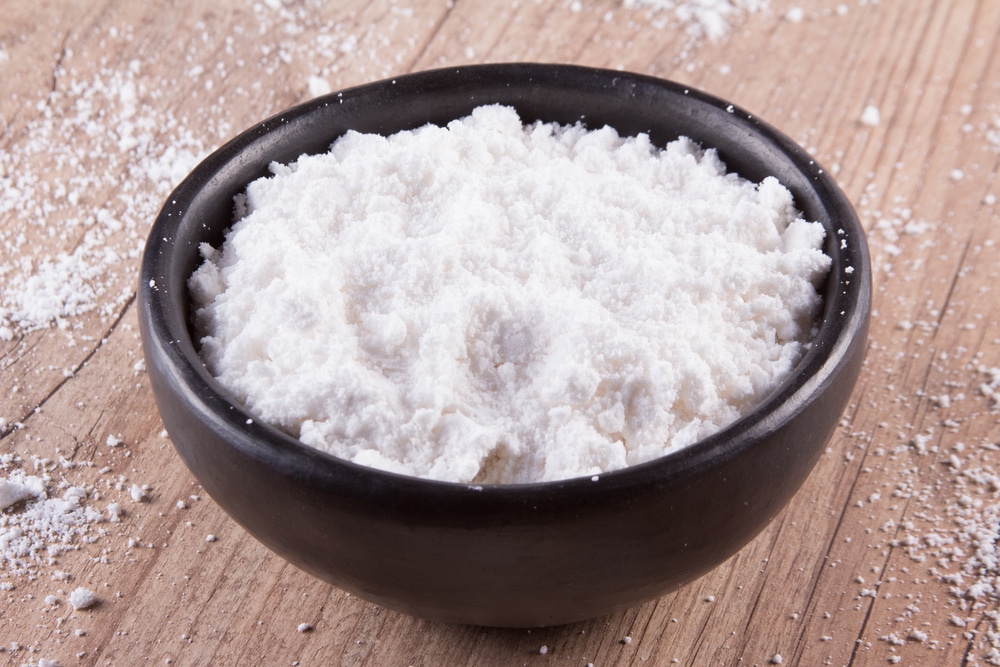
One of the most versatile gluten-free flour options is sweet tapioca flour. Made from the cassava plant, the flour is extracted through washing and pulping instead of milling. It has a starchy quality and works well on its own as a thickening agent.
Tapioca flour is much sweeter than brown rice flour. Using it as an alternative flour will give the thing you’re making a nice, naturally sweet flavor that only tapioca flour has. It creates a crunchy crust and a chewy middle when added to baked goods, but it’s really that natural sweetness that gives it a reputation as a great substitute.
Because tapioca flour is lighter and starchy, you’ll need more of it in your baking projects. Typically, a two-to-one ratio works when replacing brown rice flour with tapioca flour. It’s also best to mix tapioca flour with two or three other gluten-free flours, like almond, oat, and coconut.
Tapioca flour’s starchy complexion makes it an excellent thickening agent. Whether in soups, sauces, or gravies, tapioca flour works better than other thickening agents to create the texture you want. Its flavor makes it an invaluable tool, whether you’re cooking or baking.
It’s a great addition to baked goods. You can use it to thicken dough, even if you’ve used other flours as the majority substance. Its unique sweetness lends a particular delicacy that other flours don’t provide.
Sorghum Flour
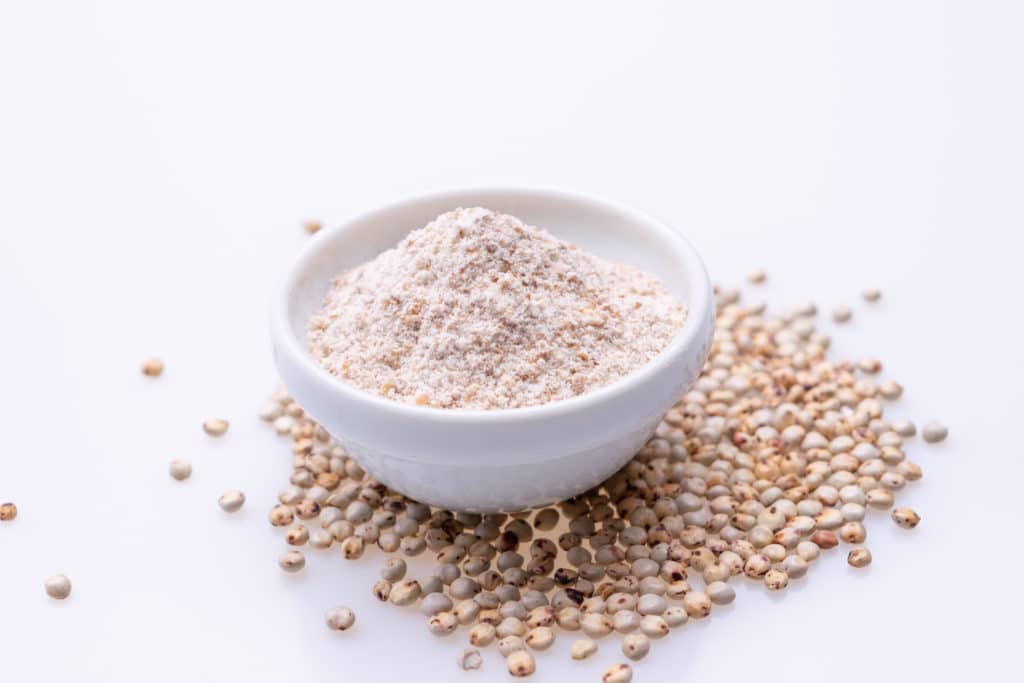
Have you ever heard of the ancient grains? Ancient grains refer to a group of grains that have remained mostly unchanged for thousands of years. Sorghum is one of those ancient grains.
Sorghum flour comes from the sorghum plant, one of the most important grains grown in the world. Sorghum flour is nutrient-rich, slightly sweet, and naturally gluten-free. Sorghum flour has a similar taste to brown rice flour, though you might describe it as a little nutty.
The great thing about substituting with sorghum flour is that there is no ratio to figure out. You can (and should) use just as much sorghum flour as you would brown rice flour, making the conversion process simple and headache-free.
Sorghum flour is excellent in baked goods. Because it is rich in nutrients like protein and fiber, it holds up well and doesn’t get crumbly like other gluten-free flours. Since it has such a sturdy complexion, it’s an easy substitute that you don’t have to think about too much. Remember that you may have to add a binding agent, such as an extra egg.
Not only is sorghum flour easy to use and remarkably delicious, but it’s also easy to find in stores. You can’t necessarily make it yourself, but you should be able to pick it up at your local grocery store. And if they don’t carry it, you can order it online!
Almond Flour
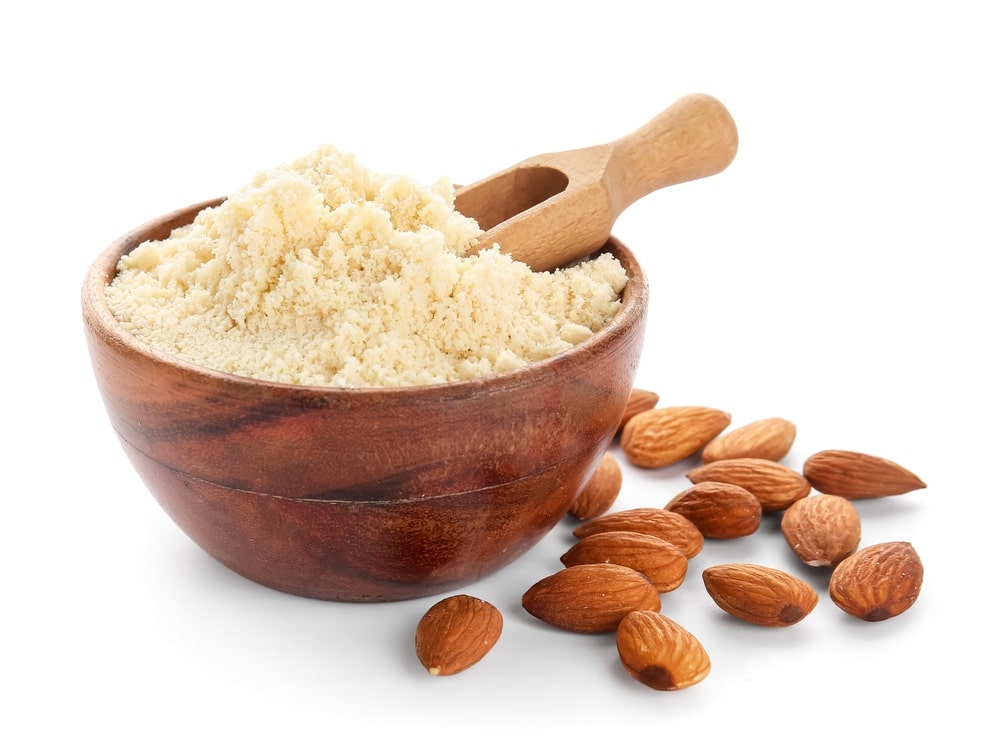
If you’re looking for more types of flour that you can make yourself, then almond flour will excite you. If you have blanched almonds and a blender, you can whip up almond flour in about five minutes. The best way to use almond flour is to add some binding agent, such as an extra egg.
Almond flour is another wonderful replacement for brown rice flour. It’s a little bit sweet, it’s a low-carb option, and it’s jam-packed with the same nutrients you get from almonds. It is a denser flour, but it has a great taste and texture. Because it comes from a nut instead of a grain, the overall complexion will be much different from brown rice flour.
Typically, almond flour can replace brown rice flour in a one-to-one ratio. Almond flour won’t absorb liquid as much as brown rice flour, so adding oat or tapioca flour will help. Depending on your recipe, you may want to mix in other gluten-free flour options as well.
Almond flour is an excellent substitute for light, pastry-like baked goods. It creates a delicate dough with its fine grind, and its high protein content adds some great nutrients to any dessert you might bake. It will bake faster than other flours, so you’ll want to watch it closely.
Because it cooks fast, Almond flour works well as breading if you intend to fry something like fish or chicken. It makes a crusty coating with just a hint of that sweet, almond flavor.
Potato Starch
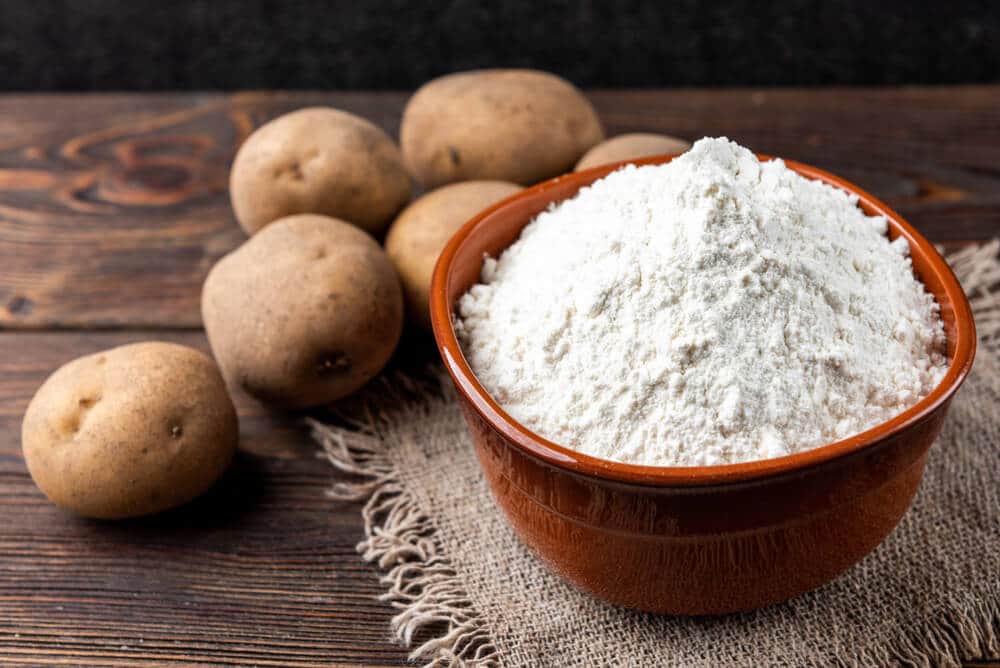
The trusty potato has long been a key ingredient in countless recipes. It’s a staple root that provides excellent nutrients and vitamins. Its rich, starchy quality makes it a great thickening agent for soups and sauces, as well as a great substitute in baking.
Potato starch is one of the most comparable alternatives for brown rice flour. It has no real discernible taste, and its fine structure makes it easy to mix into almost anything. It thickens soups fast and adds pleasant crispness to baked items like crackers and bread.
The main thing to be careful of with potato starch is using too much. Because it’s such an effective thickening agent, it can quickly make your recipe dry. Typically, a cup of flour that might be used for thickening translates to two tablespoons of potato starch. You don’t need much when you’re replacing brown rice flour.
Potato starch has many great qualities. You can use it to thicken soups, pie fillings, sauces, gravies, curries, or anything that might require thickening. It’s also great for baking, giving cookies a slight crispiness and a delicate profile to bread. It’s genuinely one of the most versatile brown rice flour substitutes out there.
See: Potato starch vs flour differences
Related Questions
Now that we’ve seen the usefulness of alternatives to brown rice flour let’s look at some frequently asked questions.
Can I substitute all-purpose flour for brown rice flour?
Yes, all-purpose flour can replace brown rice flour. However, you may have to add a little more liquid to your recipe since brown rice flour absorbs more liquid than all-purpose flour. Typically, a one-to-one ratio is all that’s needed to swap the two.
Can I substitute white rice flour for brown?
You can substitute white rice flour for brown. The two are remarkably similar (though not identical) and can easily be swapped out in recipes. White rice flour is not as thick so you will need more of it than brown rice flour.
Is rice flour the same as brown rice flour?
Rice flour and brown rice flour are similar, but they are not identical. Brown rice flour is technically a kind of rice flour. It’s thicker, denser, absorbs more liquid, and tends to have a slightly nutty taste compared to regular rice flour.
Related: Top 5 rice flour substitute
Can I substitute brown rice flour for bread flour?
You can use brown rice flour instead of the most common wheat flour. Because brown rice flour is so dense, you should use less of it to avoid ruining your recipe.
Related: Sweet rice flour substitute



